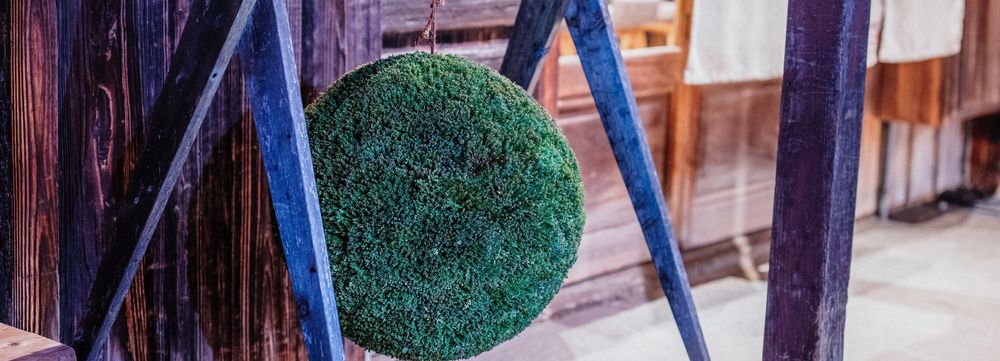
The Scenic and Historical Significance of the Roads
The Kobo Daishi Kukai’s route connecting Koyasan and Kyoto, later known as the Koya Kaido Road, became a well-traveled pilgrimage path to Koyasan. Over time, both the road and the shrines and temples lining its route were developed to accommodate the steady stream of pilgrims. Beyond its spiritual importance, the Koya Kaido Road also served as a critical hub for transportation and trade. This strategic significance led to the construction of Eboshigata Castle along the route.

Nagano Jinja Shrine
The exact origin of the Nagano Jinja Shrine is unknown. It is strategically located along the historic Koya Kaido Road, a vital route for travelers and merchants, and near a river once used for water transportation. During the feudal period (12th–16th centuries), the shrine was known as Kiyado-no-Miya (or Koyado-no-Miya). It is believed to have flourished as a hub for lumber storage due to its location at a key junction of land and water transport. This is evidenced by records from the feudal period (12th–16th centuries) that mention the place name Kiyakaito. The term Kiya refers to lumber, while Kaito denotes land, highlighting the area’s historical association with the timber trade.
In the Edo period (17th–19th centuries), the shrine was also called Gozutenno-no-Miya, as it enshrined the deity Gozu Tenno. In 1868, it was officially renamed Nagano Jinja Shrine. The shrine continues to host vibrant annual festivals, including the Toka Ebisu in January and the Taimatsu Tate Fire Festival in October. Nagano Jinja Shrine’s main hall has been designated an Important Cultural Property, and the majestic Kaya tree on its grounds is recognized as a Prefectural Natural Monument.
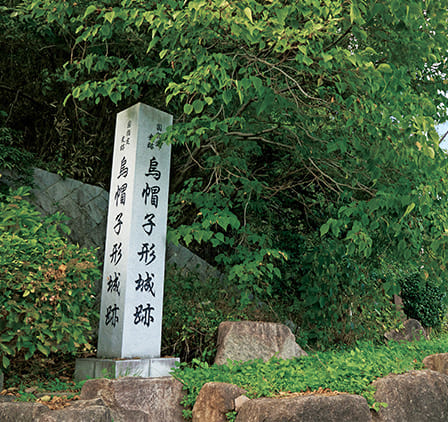
Eboshigata Castle Site
The Eboshigata Castle Site marks the location of a mountaintop fortress built between the mid-15th century and the late 16th century on Mt. Eboshigata (elevation approximately 182 meters). According to legend, the castle was one of seven fortresses built by Masashige Kusunoki. However, no definitive records exist to identify its builder or the period of its construction.
The castle overlooked the vital Koya Kaido Road and provided panoramic views of surrounding fortifications. Its design, which masterfully leveraged the natural terrain, made it exceptionally defensible and challenging to assault. Due to its tactical importance, Eboshigata Castle was regarded as a critical military base by prominent leaders of the time, including Nobunaga Oda and Hideyoshi Toyotomi.
Today, remnants such as well-preserved Dorui (earthworks) and Yokobori (side moats) allow visitors to experience the historical architecture and imagine the grandeur of the castle in its prime.
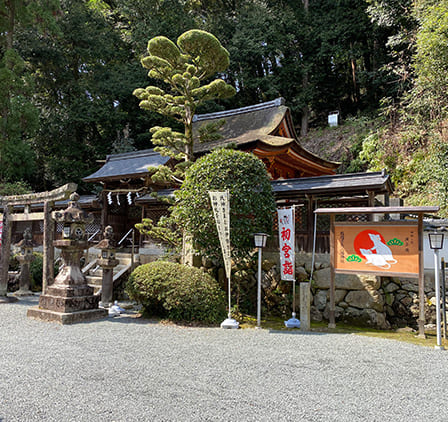
Eboshigata Hachiman Jinja Shrine
Eboshigata Hachiman Jinja Shrine is located at the foot of Mt. Eboshigata, along the historically significant Koya Kaido Road, a vital transportation route. The shrine is believed to have been established to safeguard Eboshigata Castle from enemies and calamities. Its main hall, designated as an Important Cultural Property, was constructed in 1480 by Hachiro Ishikawa.

Zofukuji Temple
Zofukuji Temple is said to have been founded to honor the soul of Yoshifuka Hatakeyama, governor of Kawachi during the Muromachi period, who spent his final days in the area following his retirement.
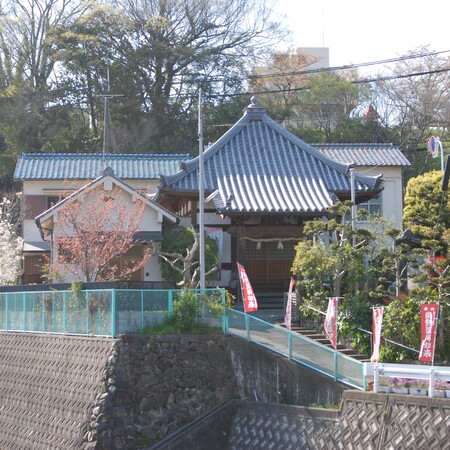
Gachirinji Temple
According to the Gachirinji Temple record, Gachirinji Temple traces its origins to the early Heian period, when Morokoshi Choja received a statue of Yakushi Nyorai (Bhaisajyaguru) from Kobo Daishi Kukai. After Morokoshi Choja's death, his wife built a hall on the site of the current Gachirinji to enshrine the statue as the principal image. The seated statue of Yakushi Nyorai (Bhaisajyaguru), designated a Prefectural Cultural Property, is unveiled to the public annually on June 8.
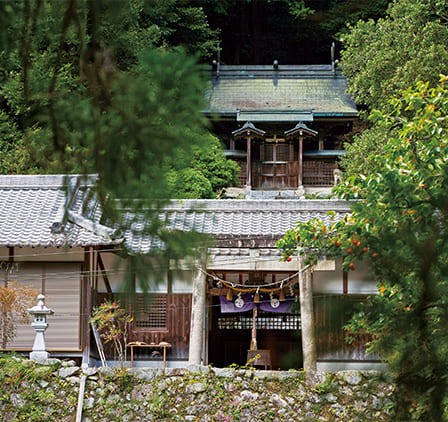
Hachiman Jinja Shrine
Hachiman Jinja Shrine has a history dating back to 1039 when the sacred object of worship from Iwashimizu Hachimangu Shrine (Kyoto) was enshrined, and a shrine building was constructed on this site. In the 13th century, the shrine underwent significant repairs, and in 1340, an iron kettle was forged specifically for the Yudate ritual, a ceremonial tradition unique to the shrine. The shrine grounds are home to a magnificent ginkgo tree, estimated to be over 400 years old. This ancient tree has been designated as a Prefectural Natural Monument.
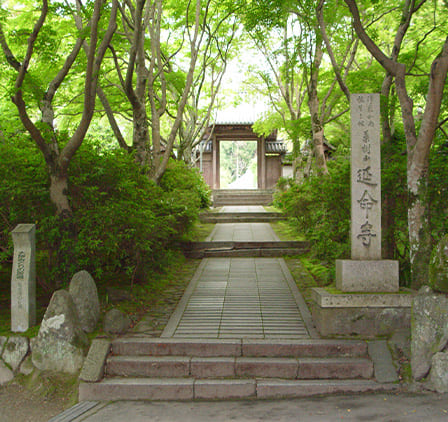
Enmeiji Temple
Enmeiji Temple is said to have been initially founded by Kobo Daishi Kukai, who carved a standing statue of Jizo Bosatsu into stone and built a hall to enshrine it. Although the temple later fell into ruin, it was preserved through the dedication of the local community. In 1677, it was re-established by Jogon, a monk native to the area. The Bishamondo Temple houses a standing statue of Bishamonten, believed to have been the nenjibutsu (personal devotional Buddha) of Masashige Kusunoki. The temple grounds are also home to a site believed to be the burial place of Masatoo Wada, a notable figure of the Kusunoki clan.
*Nenjibutsu: A Buddha statue used for private prayers.

Kawakami Jinja Shrine(Near the Osawa Kaido Road)
Kawakami Jinja Shrine, originally known as Hatohara Shrine, was dedicated to Susanoo-no-Mikoto as its enshrined deity. In 1907, it was renamed Kawakami Jinja Shrine following the merger of nearby shrines. Behind the Main Hall stands a stone mound, believed to be either the tomb of Shinsho, a figure instrumental in the construction of Kanshinji Temple, or Emperor Chokei (r. 1368-1383). Every October, the shrine hosts the Chigo Sumo, a traditional "crying baby sumo festival" event for one-year-old children.
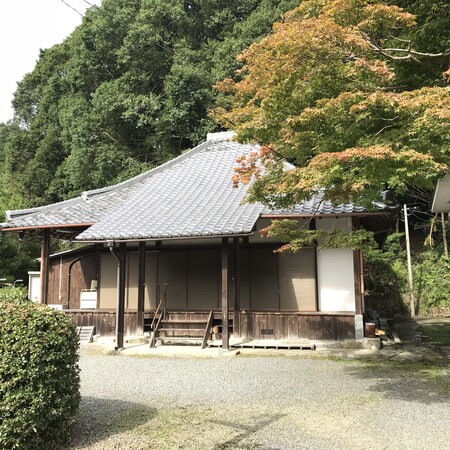
Hatohara Mirokudo(Near the Osawa Kaido Road)
Hatohara Mirokudo is a sacred hall within the grounds of Kawakami Jinja Shrine. Historically, the Hatohara area played a vital role in supporting the economy of Kanshinji Temple as a key part of its temple estate. According to tradition, Hatohara Mirokudo is believed to have served as the Inner Sanctum (Oku-no-In) of Kanshinji Temple.
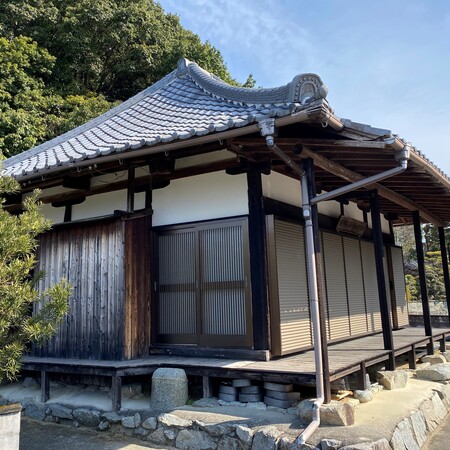
Hatohara Dainichiji Temple(Near the Osawa Kaido Road)
Hatohara Dainichiji Temple is located in the Hatohara district. It was once home to a statue of Dainichi Nyorai (Vairocana), dating back to the Kamakura period (13th–14th centuries). This historically significant statue is now entrusted to Kanshinji Temple for safekeeping.
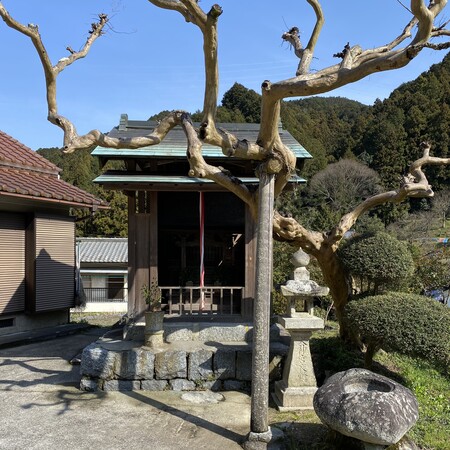
Oi Hachiman Jinja Shrine(Near the Osawa Kaido Road)
Oi Hachiman Jinja Shrine is situated in the Oi district, which was once part of Kanshinji Temple's estate. Originally nestled in the mountains, it was relocated to its present site in the 1940s, along with Gokurakuji Temple, which had shared its original location.
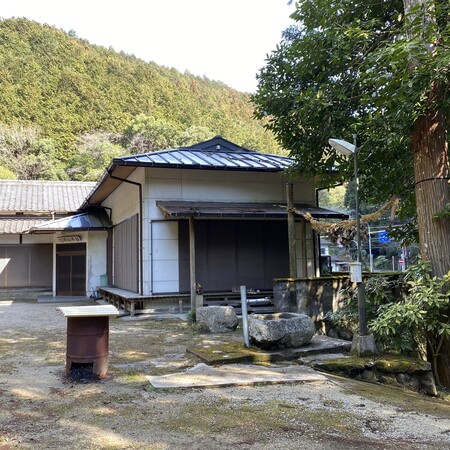
Kobuka Tengudo(Near the Osawa Kaido Road)
Kobuka Tengudo is a hall situated in the Kobuka district, formerly part of Kanshinji Temple's estate. The establishment of Kobuka Tengudo is unknown. The Tengudo, also known as the Tennodo, is still worshipped by the local people today.

The Yamamoto Family's House(Near the Osawa Kaido Road)
The Yamamoto family residence was constructed in the mid-Edo period (17th–18th centuries). During the Edo period, the Yamamoto family served as village leaders (shoya), and the residence is said to have been used as a lodging site for the local feudal lord during falconry expeditions. The house retains many traditional architectural features of rural homes in the Kawachinagano district, including its layout and the arrangement of the earthen floor (doma).
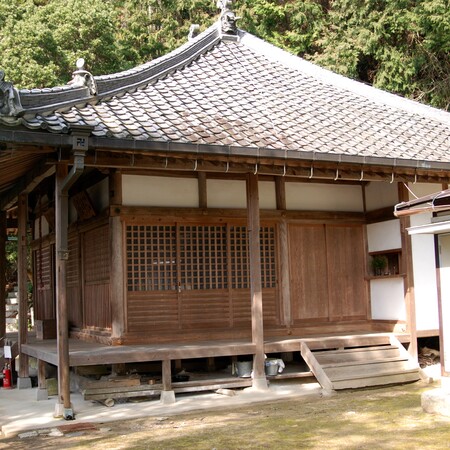
Iwaze Yakushiji Temple(Near the Osawa Kaido Road)
Iwaze Yakushiji Temple is located in the Iwaze district, formerly part of Kanshinji Temple's estate. Its mountain name is Iosan. The temple's principal deity is a standing statue of Yakushi Nyorai (Bhaisajyaguru), flanked by standing statues of the Wisdom King Fudo and Bishamonten. All three statues are designated as Municipal Cultural Property and are believed to date back to the late Heian to early Kamakura period (11th–12th centuries). On the northern side of the temple grounds stands a sandstone gorinto, designated as a Prefectural Cultural Property. Records show it was constructed in 1341.
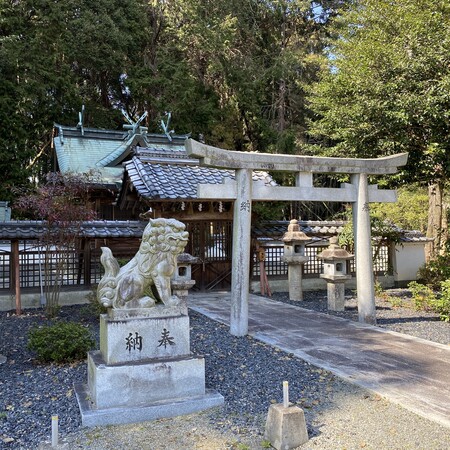
Aogahara Jinja Shrine(Near the Amano Kaido Road)
Aogahara Jinja Shrine is located in the Amano Valley. It is believed to enshrine Niu-Koya-Myojin and Koya-Daimyojin. The shrine is thought to have been established to protect Amano Valley following its donation to Kongoji Temple.
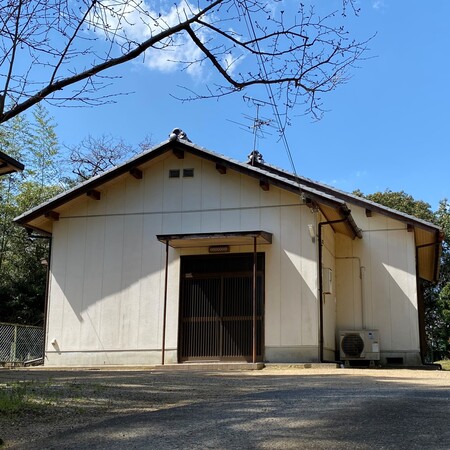
Shimozato Kannondo(Near the Amano Kaido Road)
The establishment of Shimozato Kannondo is unknown, but it has long been a cherished place of worship for the residents of the Shimozato district.
Copyright©Kawachinagano City. All Rights Reserved

